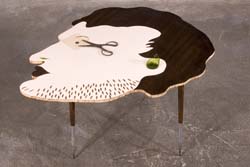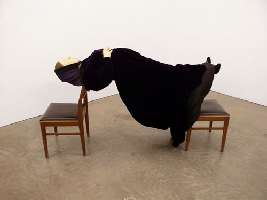

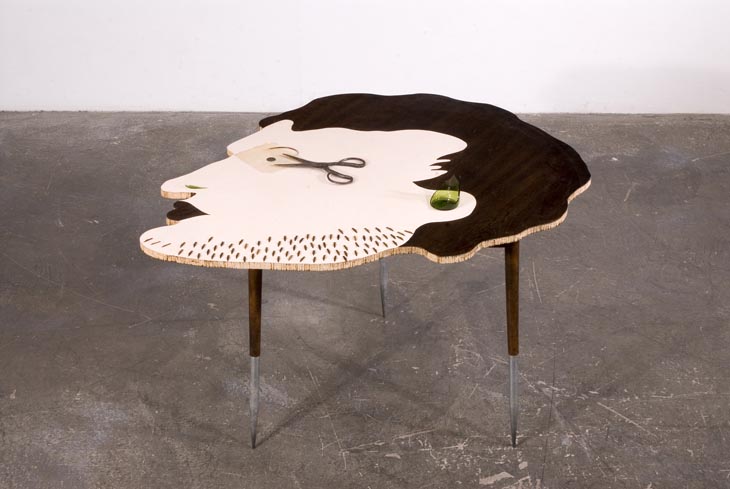
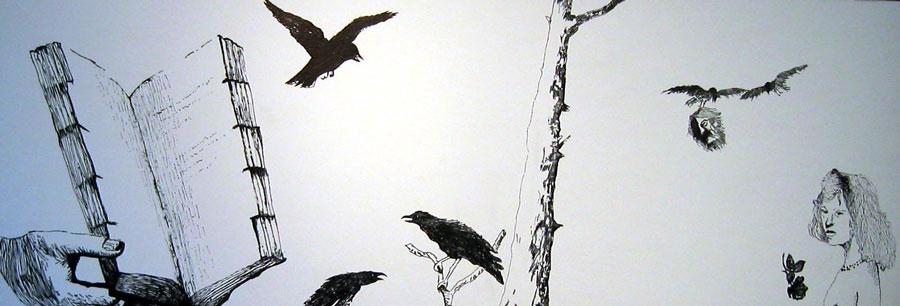
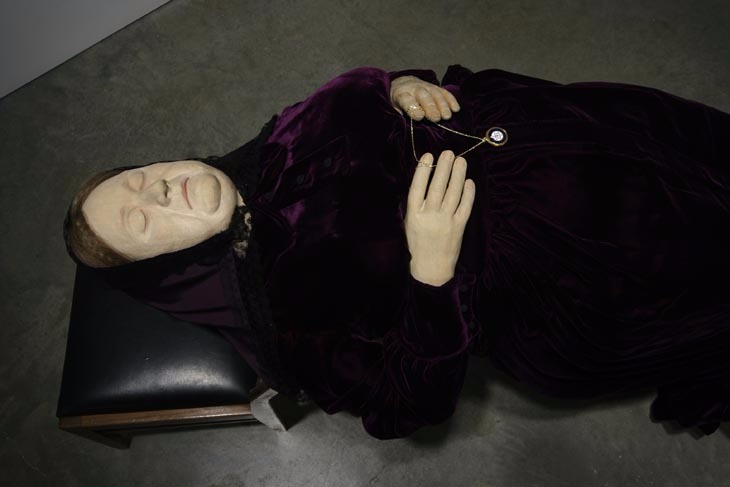
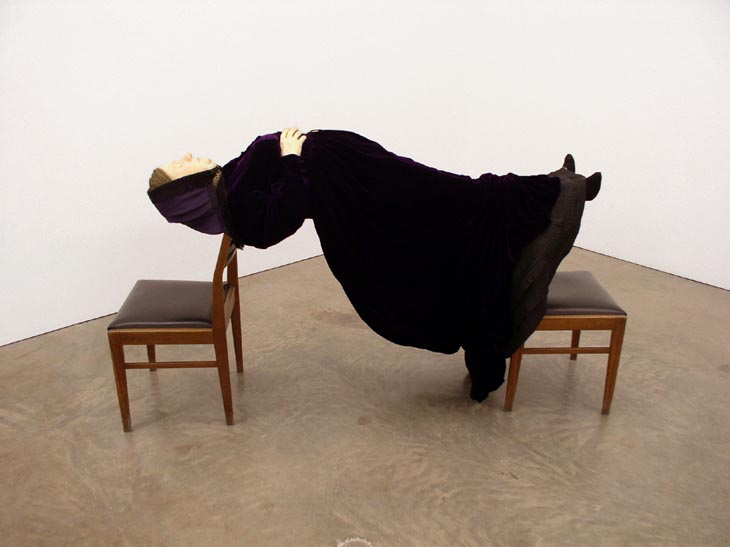
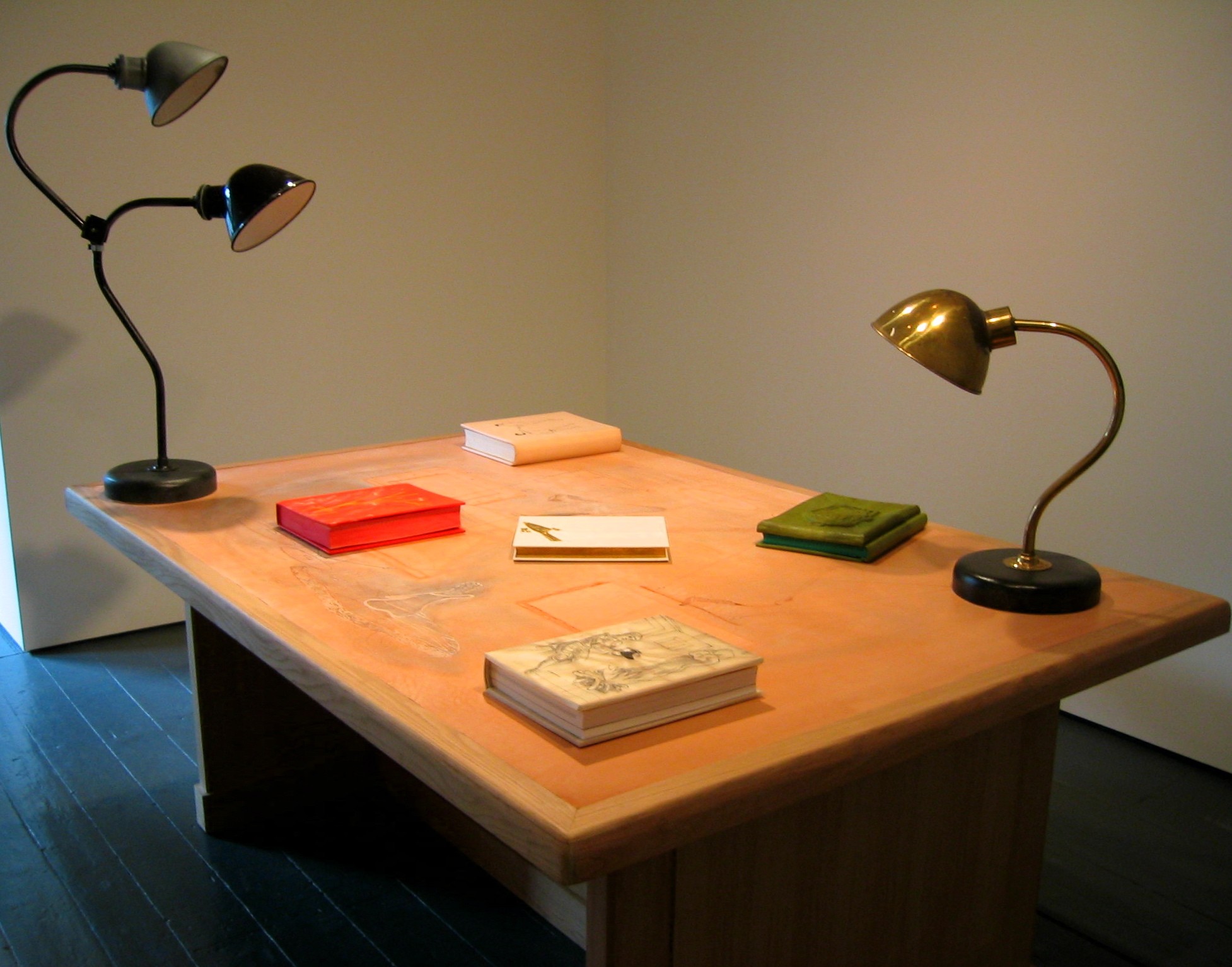

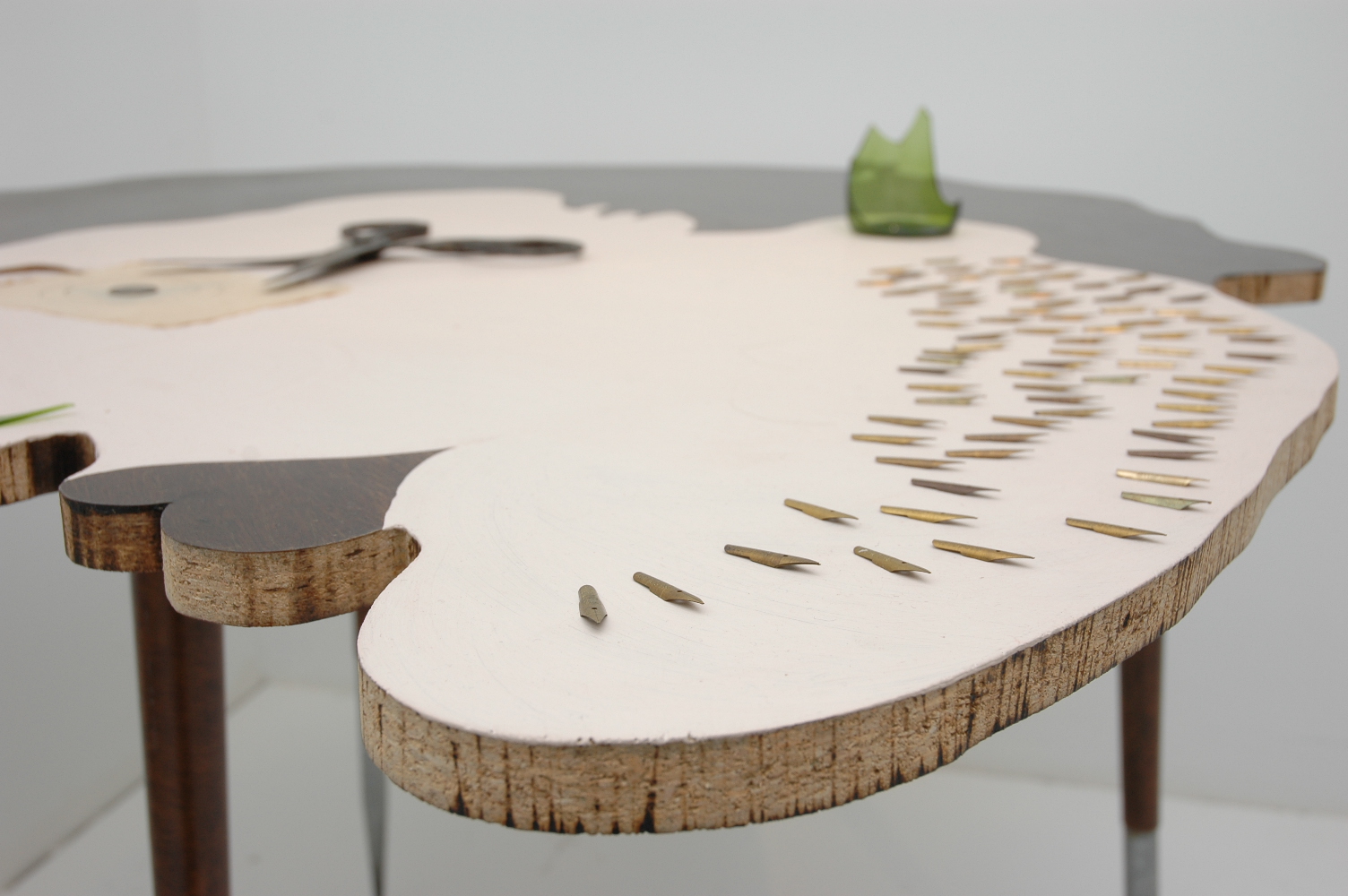
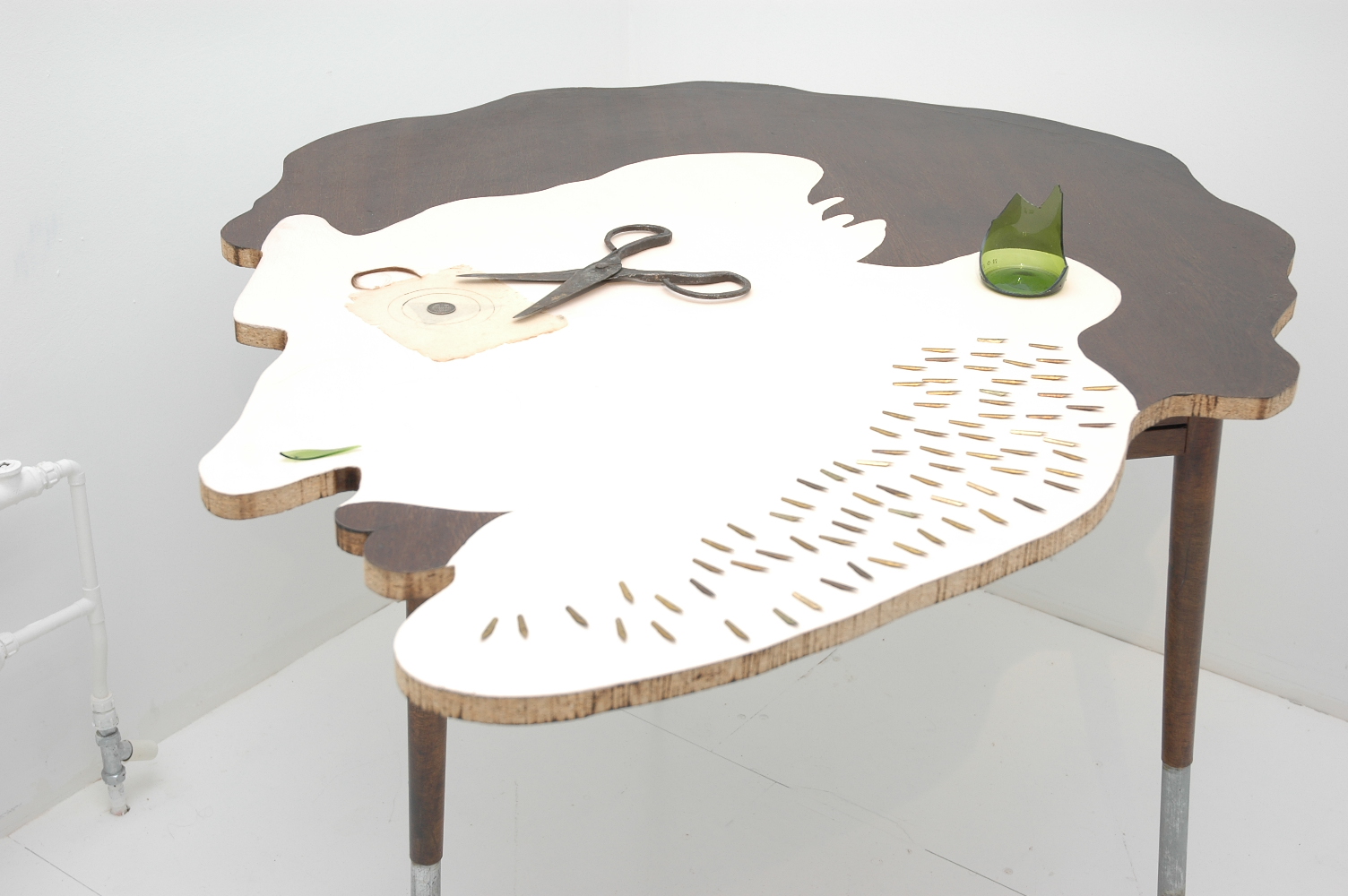
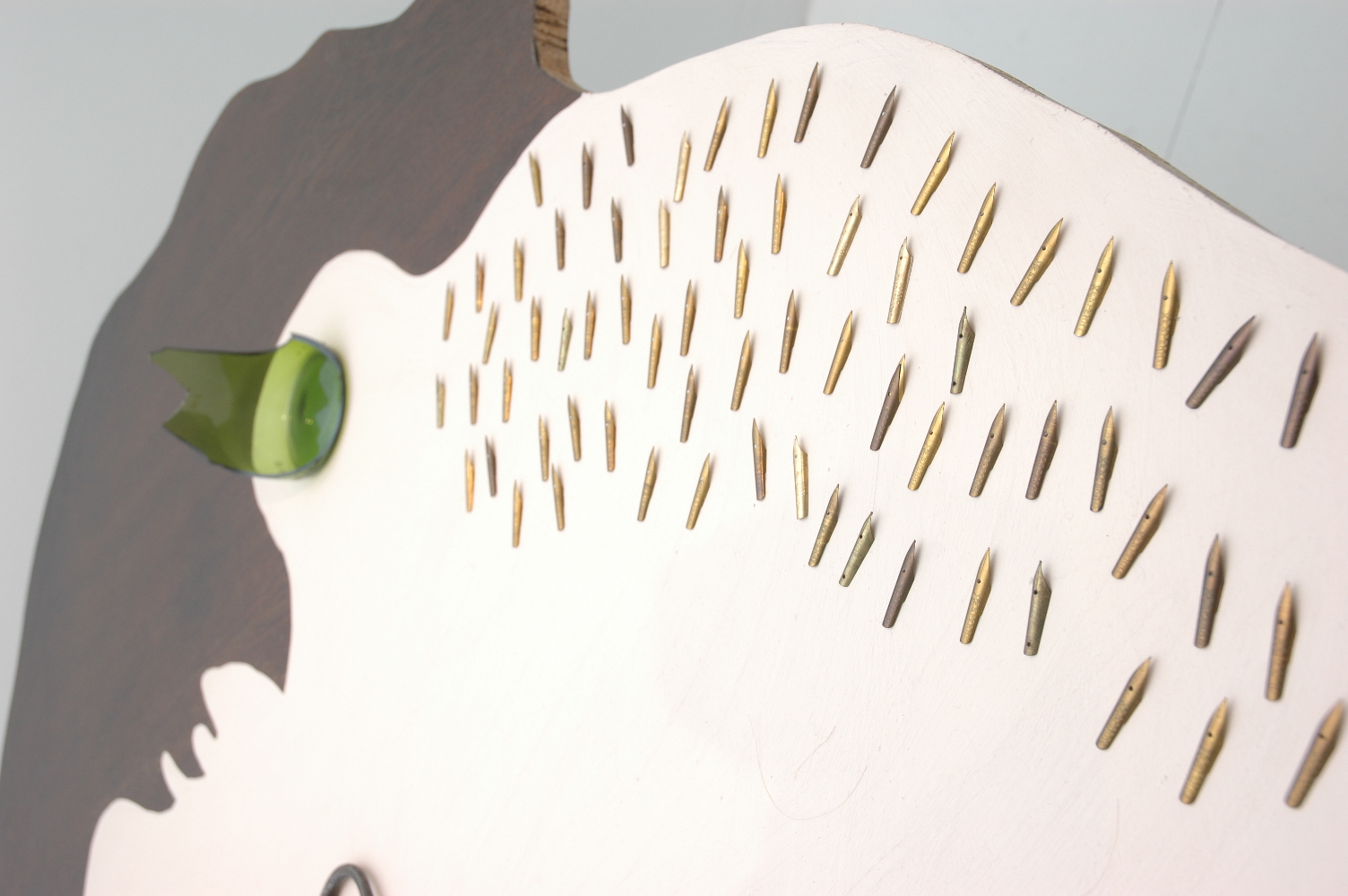
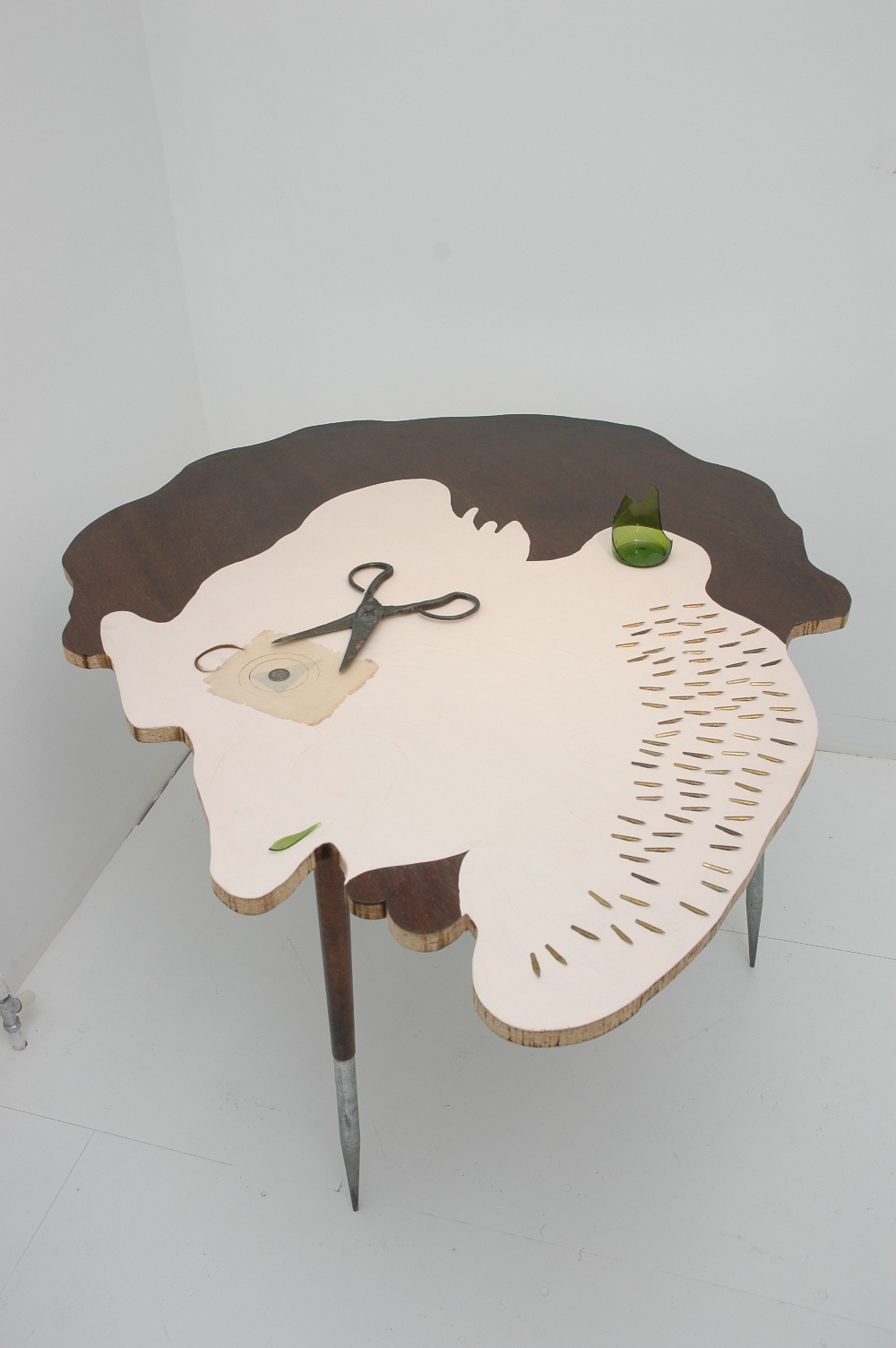
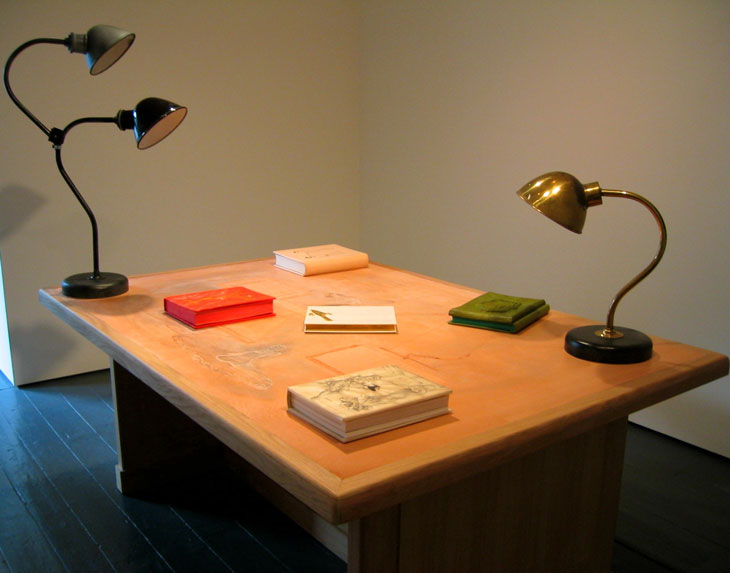
Goshka Macuga
Taking her sourced images from publications, and reactivating them in tooled leather, Goshka Macuga’s A Time To Live, A Time To Die replicates the authoritative material of book covers. Creating a double entendre ‘cover version’, Macuga’s drawing is a composite of other artists’ work, establishing a new context for image interpretation via juxtaposition of chance selection: the girl taken from Picasso, the book from Max Ernst, and birds from images from the 1905 Russian Revolution. Appropriating and reordering these disparate elements, Macuga constructs her own suggestive narrative based on an eclectic and disjointed history. Indelibly engraved on skin, A Time To Live, A Time To Die literally frames the ingrained fabric of memory as tractile experience.
Madame Blavatsky was a 19th-century Russian aristocrat and founder of the Theosophical Society, an institution based in occult practices that still exists today. Blavatsky was closely associated with the Russian avant garde, an art movement which was expunged by the practical ideologies of communism; one of the tenants in her writings was that somnambulism – a trance-like condition between waking and sleep or ‘life’ and ‘death’ – was a creative state. Macuga’s sculpture pictures a floating Madame Blavatsky (levitation was one of her many spiritual powers), hovering between two chairs. The illusionary technique used is taken from a book on Victorian parlour tricks. The hands and face of the figure are made from carved and painted wood, and are similar to religious icons of the time. Garbed in purple, the colour of both magic and mourning, Madame Blavatsky’s effigy emits a transcendental aura, channelling the dark art of inspiration from beyond.
Incorporating reference to eclectic historical materials, events, and concepts, Goshka Macuga’s installations weave subjective narratives from the fabric of accepted cultural knowledge or ‘fact’. Her works often take the form of faux museum displays that highlight the authority by which the past is framed and revised according to temporal ideas. Library Table was inspired by the architect Frederick Kiesler who, in conjunction with the collector Peggy Guggenheim, developed inventive methods for displaying art. Comprised of an imposing desk and five artists’ monographs, Library Table imprints scholarly assumption with Macuga’s own bias. The books are recovered in tooled leather depicting Macuga’s favourite images by the artists who have most influenced her work: Picabia, Polke, Warhol, Kippenberger, and Duchamp. Underneath the tomes, the table is carved with Kiesler’s drawings; the lamps were fabricated with reference to Kiesler, with one metaphorically branched to allude to the multiplicity of history’s interpretation and use.
